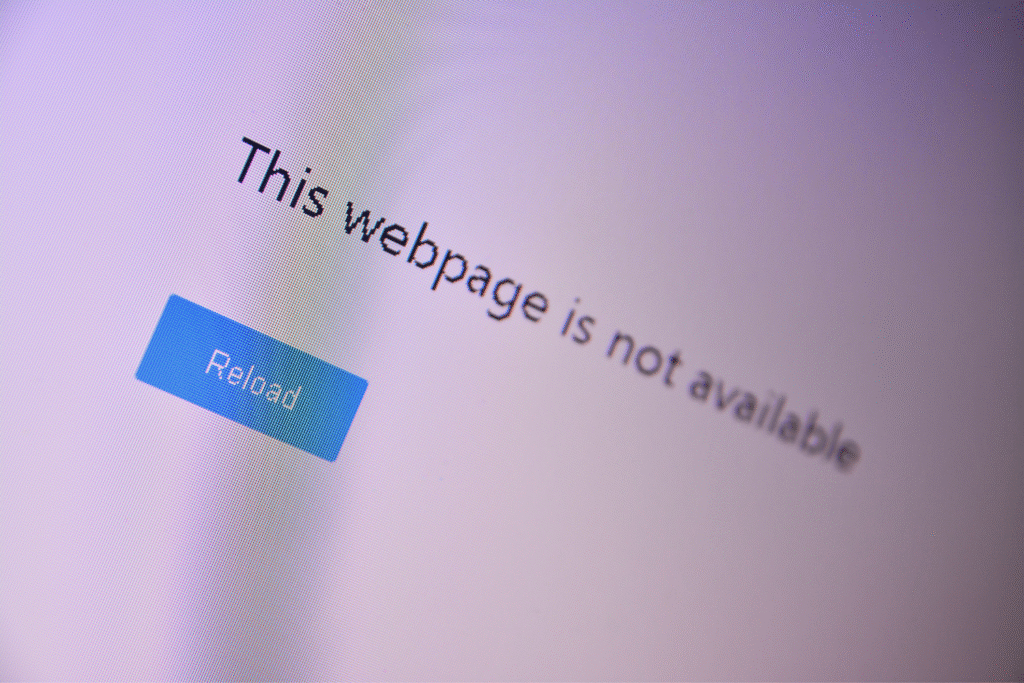Are you losing top talent in the Philippines because you’re misreading their resumes?
Many Filipino candidates have strong qualifications, but U.S. recruiters often overlook them due to unfamiliar formats, unclear job history, or missed cultural cues. Standard resume screening methods don’t always work across borders, especially when hiring skilled professionals from a different system. These gaps often result in hiring delays, mismatches, and wasted budget.
This guide offers a straightforward, practical approach to Filipino resume screening so you can identify the right candidates and improve your hiring process from start to finish.
Why Filipino Resumes Are Easy to Misread
Hiring managers often assume all resumes follow the same structure. However, Filipino resumes reflect different expectations shaped by local norms, education, and job markets. These differences can cause recruiters to overlook potential candidates during the resume screening process and miss out on top talent.
Cultural differences affect how experience is presented
In the Philippines, resumes often highlight loyalty and teamwork instead of individual achievements. Many skilled professionals avoid bold claims and focus on general job duties. This modest tone can obscure technical skills unless recruiters recognize the cultural context in how success is presented.
Resume formatting follows different standards
Filipino resumes don’t always follow U.S. formatting. It’s common to see photos, personal information, or objectives that seem outdated to Western companies. HR professionals should focus on content, expertise, and the candidate’s skills—not just design—when identifying the right talent for their workforce.
Western company names don’t always mean Western workflow
Some applicants list big-name companies, but that doesn’t guarantee experience with Western business practices or technological advancements. Many Filipino workers operate within local teams or under different expectations, even in multinational firms. Always confirm how closely a candidate’s role aligns with your job requirements and business goals.

Which Educational Credentials Matter?
Education in the Philippines is structured differently, and not all degrees or schools carry the same weight. A comprehensive overview of how to evaluate education credentials helps recruiters select the best candidates and meet recruitment needs efficiently.
How to interpret degree names, majors, and Latin honors
Filipino resumes often list degrees like “BSBA” or “AB” instead of more familiar U.S. terms. Latin honors such as “cum laude” also appear frequently and reflect academic achievement. Understanding these terms helps HR professionals screen qualified candidates more accurately and stay ahead in the hiring process.
Tier 1 vs Tier 2 vs Tier 3 universities in the Philippines
Not all universities are equal. Universities like UP, Ateneo, and La Salle are widely regarded for their competitive admission and academic reputation, making them strong indicators of academic preparation. Tier 2 and 3 schools vary widely, so reviewing their accreditation helps filter resumes based on your company’s specific needs and budget.
Professional licenses: CPA, PRC, nursing, engineering
In roles that require certification, licenses like CPA (Certified Public Accountant) or PRC (Professional Regulation Commission) credentials demonstrate the candidate has met legal requirements in the Philippines. These are critical when hiring for positions that need verified expertise and compliance with employment contract terms.
Warning signs: diploma mills and vague certificates
Be cautious with unknown schools or generic training certificates that lack clear value. Vague or unverifiable education claims can lead to costly hiring mistakes. Verification helps ensure new employees meet your standards and company policies.

How to Spot Real Remote Work Experience
Many candidates mention remote work in their resumes, but not all are equipped to meet the demands of global roles. Spotting genuine experience early is crucial for talent teams aiming to avoid delays, reduce risk, and improve cost effectiveness. The right remote experience drives success by supporting a smoother onboarding process and improving long-term fit.
Clear mentions of U.S. clients, time zone overlap, or BPO roles
When a candidate has worked with U.S.-based clients or maintained overlapping schedules, it signals readiness for real-time communication and workflow alignment. Experience in BPO roles also shows exposure to international company standards—an advantage when filling roles through job boards or fast-tracking a formal job offer.
Familiarity with tools like Slack, Asana, or QuickBooks
Proficiency in platforms like Slack, Asana, Zoom, or QuickBooks is more than a bonus—it’s a signal of proven capability. These tools are standard in remote teams and reduce training time for new hires. For recruiters managing multiple candidates in a tight hiring process, this familiarity supports faster integration and improves the cost effectiveness of the overall recruitment effort.

Green flags: home office setups and technical readiness
Candidates who highlight their technical setup often bring more than just basic qualifications—they show they’re ready to work without delays, troubleshoot independently, and meet your team’s expectations from day one. Look for the following green flags that show real remote readiness:
- High-speed internet listed with Mbps speed and backup options
- Mention of noise-canceling headphones, updated laptop, or dual monitors
- Access to a quiet, dedicated home office or work desk
- Familiarity with cloud storage tools and online communication platforms
- Experience troubleshooting minor tech issues without needing constant support
- Use of time-tracking or productivity software like Time Doctor or Hubstaff
- Knowledge of cybersecurity basics, like using VPNs or password managers
These details reflect a candidate’s commitment and help your hiring team stay ahead when building a strong, remote-ready workforce.
Cultural bridge indicators like Western business training
Applicants with certificates from platforms like LinkedIn Learning, Coursera, or other Western training programs often show stronger alignment with international company culture and expectations. These credentials show the candidate is prepared to work across cultures and with global teams. For recruitment agencies and hiring managers, they also simplify the background check process and reduce the adjustment time for new hires joining global teams.

Resume Green Flags to Prioritize
Strong resumes don’t always come with long job histories. Filipino candidates with readiness, clarity, and experience with tools or teamwork often bring more value than those with inflated titles. Focus on quality markers that match your recruitment needs.
Top-tier university or accredited school
Graduates from well-known universities often have stronger academic backgrounds and better training. Schools like UP, Ateneo, or DLSU are reliable indicators of qualified candidates. Accreditation also matters—choose resumes that list credible schools and verified programs.
Strong written English and professional formatting
Clear grammar, no typos, and a clean layout show attention to detail and communication skills. These traits are essential for remote work and help ensure clear communication with your team. Good formatting also reflects respect for the hiring process.
Remote collaboration tools and infrastructure setup
Candidates who mention Slack, Zoom, Trello, or Google Workspace have remote work experience. Listing hardware specs or internet speeds also shows technical expertise. This simplifies onboarding and helps new hires integrate smoothly.
Quantified results or specific project outcomes
Look for resumes that show results: revenue earned, tasks completed, or timelines met. Phrases like “reduced processing time by 20%” or “managed 10 client accounts” offer valuable insights into the candidate’s skills and past performance.

Common Red Flags in Filipino Resumes
Not every resume tells the whole story. Some signs may look harmless but can point to gaps, poor fit, or a mismatch with your company culture. Knowing what to watch for helps your hiring team avoid unnecessary delays or onboarding issues.
Job hopping without context or role progression
Frequent short-term roles with no clear promotions can signal issues with commitment. Ask for explanations during the interview to see if there’s a valid reason or deeper problem. A strong track record usually shows a specific period of growth or responsibility.
Certifications that don’t match claimed skills
Some candidates list certificates to fill the space but lack the actual knowledge. A resume might mention design software, but the work history shows no related tasks. This mismatch is a red flag for recruiters and HR professionals.
Lack of detail in remote work experience
Watch out for resumes that say “remote” but offer no context. Look for mentions of tools, schedules, or team structures. A vague claim about remote work makes assessing fit and readiness for your recruitment process harder.
Sloppy grammar or informal email addresses
Grammatical errors, texting shorthand, or unprofessional email addresses like ‘cutiegirl2020@’ may raise red flags. Even if the candidate is skilled, these details can create doubts during resume screening and may affect client-facing roles.

A Quick Screening Checklist You Can Use
Hiring managers often need to review dozens of resumes quickly while staying aligned with the job description and company standards. A structured checklist simplifies this step, especially when sourcing through job boards or recruitment agencies. It also ensures that every relevant candidate is measured against the same set of crucial factors—saving time, avoiding misreads, and improving outcomes for organizations hiring in the Philippines.
Education match and verification
Verify if the candidate’s school is accredited and matches the educational level required in your job posting. Use recruitment agencies or background check tools to confirm majors, Latin honors, and license status. This market research helps ensure you’re hiring from credible institutions and avoiding diploma mills.
Experience with Western companies or tools
Candidates who’ve supported Western clients or used global tools like QuickBooks, Salesforce, or Slack often adjust faster to international workflows. These details demonstrate a proven track record in similar work environments and improve fit for jobs that require cross-border coordination.
Remote readiness and home office setup
Check for a reliable home office: fast internet, updated hardware, and backup power. These are essential for jobs that require remote stability. Candidates who include this information show preparedness, one of the most valuable benefits when hiring offshore.
Communication clarity and formatting
Strong communication shows up early. Well-formatted resumes with clear language, accurate grammar, and organized sections make it easier to assess candidate fit. This is especially important for roles that rely on written updates, team collaboration, or customer-facing tasks.
Cultural adaptation or cross-border teamwork
Candidates with experience working across time zones or with Western teams bring more than hard skills—they often understand other terms, expectations, and workflows. Look for mentions of cultural training, global platforms, or soft skills that reflect strong cross-cultural communication.
Using this checklist provides comprehensive information at a glance and helps your team stay aligned as you evaluate applicants from the Philippines and other markets. It’s a practical tool for identifying relevant candidates and securing the right talent for your job.

Real-World Example: Strong Resume vs Risky Resume
Two Filipino candidates may look similar on paper but perform very differently once hired. A strong resume isn’t about years of experience alone—it’s about relevance, clarity, and real-world readiness that matches your job posting.
Why Candidate A stood out with less experience
Candidate A applied for a U.S.-based executive assistant role. Their resume was simple but included key hiring signals: overlap with U.S. time zones, experience supporting American clients, and detailed results like “managed 3 inboxes across 2 time zones with 95% response rate.” They mentioned tools like Google Calendar, Zoom, and Hubstaff, plus a clear home office setup. Even though their resume wasn’t flashy, it gave the hiring team exactly what they needed to see: commitment, technical readiness, and the ability to support U.S. executives without micromanagement.
How Candidate B had more years but raised too many questions
Candidate B submitted a resume with 10+ years in various administrative roles. It listed well-known companies but lacked context—no mention of clients served, tools used, or results delivered. Formatting was inconsistent, with spelling errors and outdated objectives. During screening, the candidate struggled to explain gaps and provided no detail on their remote setup. The experience was real, but the resume failed to communicate job fit clearly—leaving the hiring team uncertain about culture fit, work quality, and onboarding ease.

Hire with Confidence and Clarity
Effective Filipino resume screening requires more than scanning for keywords. It means understanding cultural nuances, verifying credentials, and looking for signs of real-world readiness. When your hiring process prioritizes clear communication, remote work experience, and relevant qualifications, you can attract top talent, reduce hiring mistakes, and build a strong offshore team that fits your company culture and recruitment needs.
Frequently Asked Questions
What does “units earned” mean on a Filipino resume?
“Units earned” refers to completed college credits, often used when the candidate has not yet finished a degree.
How do I verify the legitimacy of a Philippine university?
You can check a school’s accreditation through the Commission on Higher Education (CHED) or refer to lists of recognized institutions in the Philippines.
What’s the best way to confirm remote work experience?
Ask for specific tools used, time zone overlap, and references from past clients to verify actual remote work experience.
Which certifications should I trust from Filipino applicants?
Certifications from TESDA, PRC, and globally recognized platforms like Coursera or Google are typically credible for skills assessment.
Can I require proof of home office setup before hiring?
You can request photos or internet speed test results to confirm a candidate’s remote work readiness during the hiring process.
References
- Chi, C. (2024, February 22). Philippines’ ‘diploma mill’ rep may attract low-tier foreign universities, expert warns. Philstar.com. https://www.philstar.com/headlines/2024/02/22/2335333/philippines-diploma-mill-rep-may-attract-low-tier-foreign-universities-expert-warns
- Conchada, M. I. P., & Tiongco, M. M. (2015). A review of the accreditation system for Philippine higher education institutions (Discussion Paper Series No. 2015-30). Philippine Institute for Development Studies. https://pidswebs.pids.gov.ph/CDN/PUBLICATIONS/pidsdps1530.pdf
- Professional Regulation Commission. (n.d.). List of requirements. Republic of the Philippines. https://www.prc.gov.ph/index.php/list-of-requirements
- Ranara, J. P. M. (2025, April 24). Ateneo, UP top PH schools in 2025 THE Asia University Rankings. Philstar Life. https://philstarlife.com/news-and-views/980236-ateneo-up-top-philippine-school-2025-times-higher-




